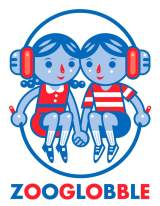Review: Lead Belly Sings For Children - Lead Belly
 Friday, June 23, 2006 at 12:35AM
Friday, June 23, 2006 at 12:35AM It's hard to think about a time before "children's music" was even a genre, back before, well, if we weren't walking to school in the snow uphill both ways, at least before satellite and internet radio offered people thousands of listening choices. But there were a few artists that recorded songs for kids (if not exclusively) a half-century ago and for their continued presence on CD, we have the fine folks at Smithsonian Folkways to thank. Of the four major kids' artists on Folkways' roster (Ella Jenkins, Pete Seeger, Lead Belly, and Woody Guthrie), Lead Belly's collection of children's music is the most compact (read: easiest to review), and that's where I'll begin.
Lead Belly was born in 1888 and, according to the detailed liner notes in Lead Belly Sings For Children, Folkways' 1999 collection of his children's material, he claimed to have collected 500 songs over the 60 years of his life. From that perspective, Lead Belly was clearly important to 20th century American music and this collection should be considered "essential" for that alone. It's a reference CD of sorts. But I'm sure you have heard many "essential" albums that sat unused on your shelf for yours or went back to the library without even one renewal -- is this one of those albums?
Thankfully, there is enough great material that merits repeated spins by a modern audience. The album is grouped by type of song, starting off with children's rhymes and game songs from many years ago, such as "More Yet" and "Sally Walker," then sliding into blues songs (though those are certainly mixed throughout the entire collection). The spirituals collected here are given fine renditions as well, getting a group of children to sing with him on "Every Time I Feel the Spirit" and "Swing Low, Sweet Chariot." The collection ends with a series of work songs, many of which will be familiar to modern listeners, including "John Henry" and "Pick a Bale of Cotton." (Any interpreter of children's and folk songs worth his or her salt will have covered at least one of the songs here.)
My ears are spoiled by modern production values, and so I was pleased by the fact that these recordings, some of which are more than 60 years old, sound pretty good. Lead Belly's voice is appealing (I particularly liked the way his voice sounded on his slightly bluesier take on the chorus of "Blue-Tailed Fly (Jimmie, Crack Corn)") and his guitar work (it's generally just him and his guitar) is easily heard. (An exception to the "solo" rule is his lively rendition of "Pick a Bale of Cotton" with the Oleander Quartet.) A minor quibble with the disk is that Lead Belly's introductions (and there are many of them) sound a bit muddled compared to the songs themselves. When Lead Belly get a crowd of children to sing along, however, they sound great.
Children aged 2 through 10 or so would probably most appreciate the songs here (though different songs will appeal to different age groups. You can hear clips at the Smithsonian's site.
Given the broad historical overview of the collection, and the relative sameness of the songs, it's unlikely that Lead Belly Sings For Children will become you or your child's favorite children's music album. It's very likely, however, that you will find a few songs worth playing repeatedly and that it won't gather much dust on your shelf. Recommended.




